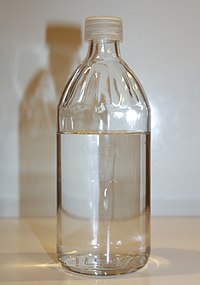
Photo from wikipedia
The absolute dating of documents is still one of the most important challenges for forensic document examiners (FDE). The potential difference between the date on a questioned document and the… Click to show full abstract
The absolute dating of documents is still one of the most important challenges for forensic document examiners (FDE). The potential difference between the date on a questioned document and the actual year of production of the used paper can be only 1 to 5 years. Until now, there was no analytical method with this accuracy available. This study demonstrates a method for an absolute dating of paper by using the 14C bomb peak and dating the starch in the paper. Accelerator mass spectroscopy (AMS) radiocarbon measurements were performed on starch extracts and cellulose fibers from 50 paper samples with known production year from 1950 to 2018. For most of the paper samples, the measured 14C concentration values in the starch extracts were highly correlated with the data of the 14C bomb peak calibration curve. The differences between the calibrated ages and the actual harvest years of the starch‐containing plants were only up to 3 years. The 14C concentration in the paper fibers showed a lower but significant correlation with the production year of the papers and can be used to support the dating results of the starch extracts. In order to secure the accuracy of the dating, aside from the radiocarbon measurements of the extracted starch other analytical methods or data are used, like a detailed chemical analysis of the paper composition including fiber composition and the spectroscopic analysis of the purity of the starch extracts. In practice, only starch extracts without contaminations are used for the paper dating.
Journal Title: Journal of Forensic Sciences
Year Published: 2022
Link to full text (if available)
Share on Social Media: Sign Up to like & get
recommendations!